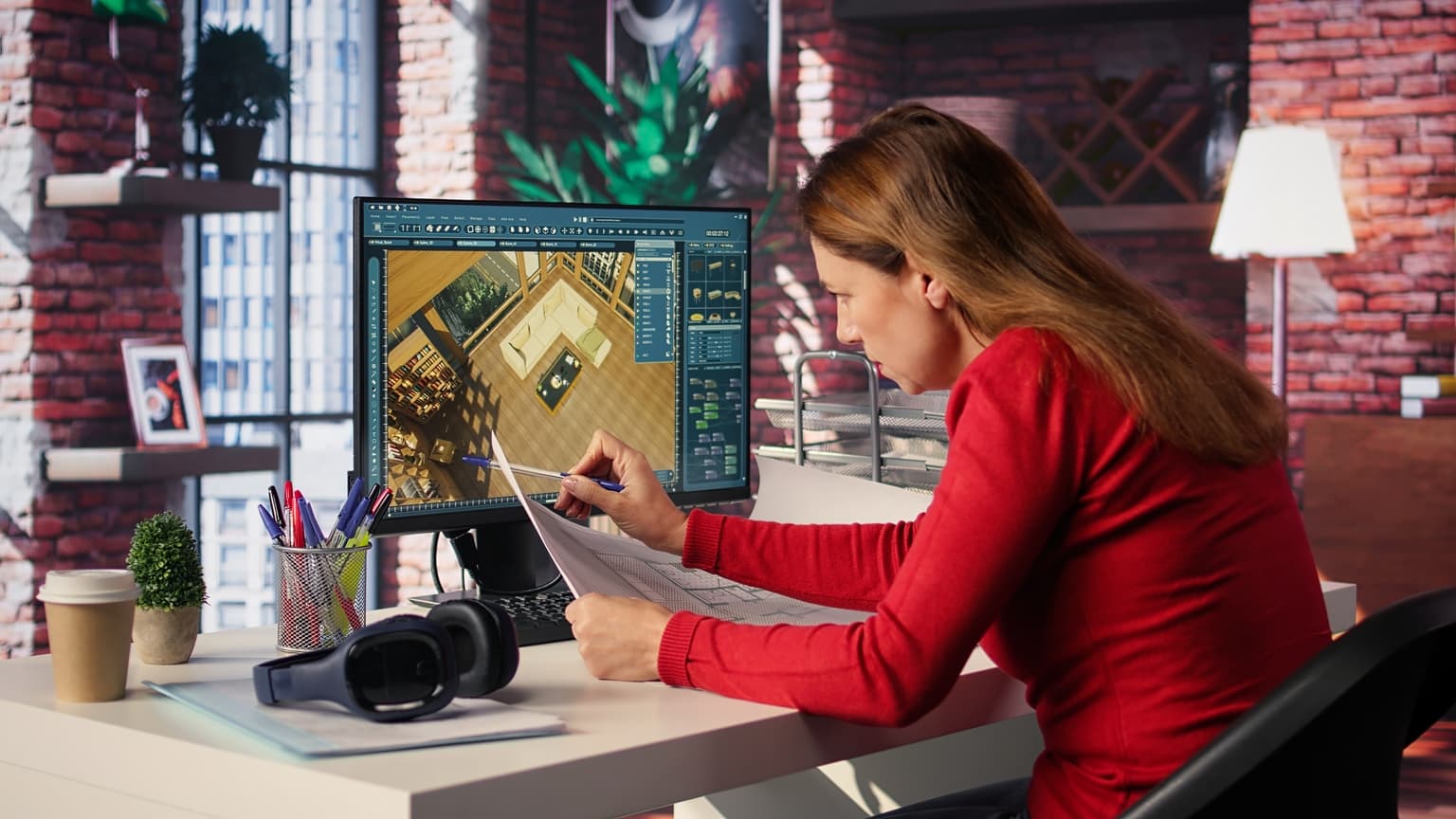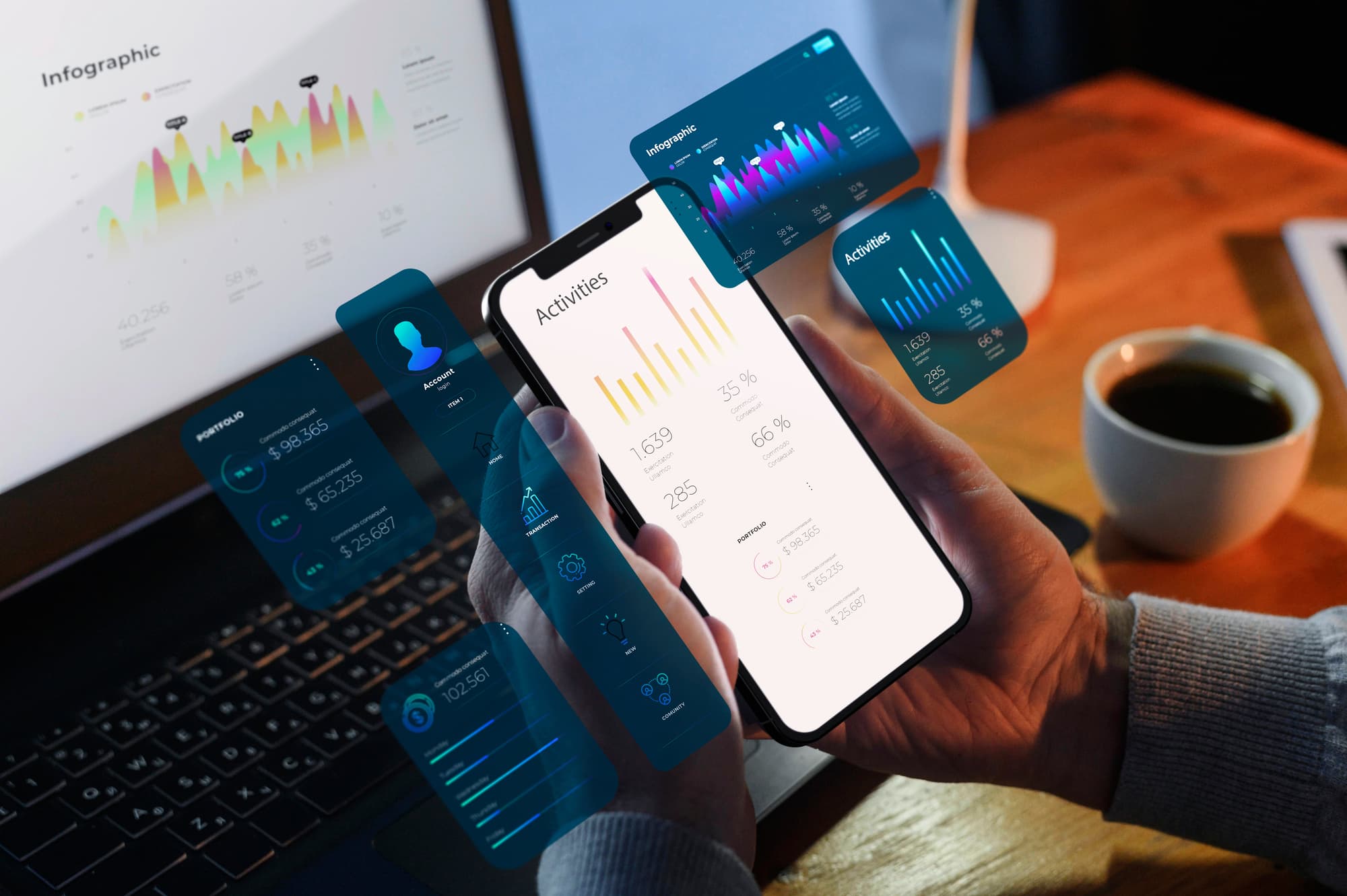

The Future of User Experience: Trends Shaping Digital Interactions in 2024
Dive into the latest UX trends that are reshaping how users interact with digital products, from AI-powered interfaces to immersive experiences.
Farhan Mansoor
Technology Lead

The Future of User Experience: Trends Shaping Digital Interactions in 2024
Dive into the latest UX trends that are reshaping how users interact with digital products, from AI-powered interfaces to immersive experiences.
Farhan Mansoor
Technology Lead
Table of Contents
About the Author
Farhan Mansoor
Technology Lead
Expert in user experience design, interface innovation, and digital product strategy. Passionate about creating intuitive, engaging experiences that delight users and drive business results.
Related Articles


Mobile-First Development: Why It's More Important Than Ever

Beyond Development: Building Scalable and Secure Digital Solutions
The field of user experience design is experiencing unprecedented transformation, driven by technological advances, changing user expectations, and evolving design methodologies. As we navigate through 2024, several key trends are reshaping how users interact with digital products, from AI-powered interfaces to immersive experiences that blur the lines between physical and digital worlds. This comprehensive exploration examines the latest UX trends that are defining the future of digital interactions.
The Evolving UX Landscape
User experience design has evolved far beyond simple interface design to encompass holistic experiences that consider user emotions, context, and long-term relationships with products. Today's UX professionals must navigate complex ecosystems of touchpoints, technologies, and user needs while maintaining focus on creating meaningful, accessible, and delightful experiences.
AI-Powered Interfaces
Artificial intelligence is revolutionizing user interfaces by enabling more intuitive, predictive, and personalized experiences. AI-powered interfaces can anticipate user needs, provide intelligent assistance, and adapt to individual user behaviors and preferences.
- Intelligent chatbots and virtual assistants
- Predictive text and auto-completion
- Smart content recommendations
- Automated user journey optimization
- Natural language processing interfaces
Immersive Experiences
Immersive technologies like augmented reality (AR), virtual reality (VR), and mixed reality (MR) are creating new possibilities for user engagement and interaction. These technologies enable designers to create experiences that transcend traditional screen-based interfaces.
- Augmented reality product visualization
- Virtual reality training and education
- Mixed reality collaborative workspaces
- Immersive storytelling and entertainment
- Spatial computing interfaces
Personalization and Customization
Users increasingly expect personalized experiences that adapt to their preferences, behaviors, and context. Modern UX design incorporates sophisticated personalization strategies that create unique experiences for each user while maintaining usability and accessibility standards.
Accessibility and Inclusive Design
Accessibility has moved from compliance requirement to core design principle, with inclusive design practices becoming essential for creating products that serve diverse user populations. Modern UX design prioritizes accessibility from the ground up.
- Universal design principles
- Assistive technology integration
- Cognitive accessibility considerations
- Multi-modal interaction design
- Cultural and linguistic inclusivity
Micro-Interactions and Animation
Micro-interactions and thoughtful animation continue to play crucial roles in creating engaging user experiences. These design elements provide feedback, guide user attention, and create emotional connections with digital products.
- Contextual feedback and confirmation
- Loading states and progress indicators
- Gesture-based interactions
- Emotional design and personality
- Performance-optimized animations
Voice and Conversational Interfaces
Voice interfaces and conversational design are becoming increasingly sophisticated, enabling more natural and intuitive interactions with digital products. These interfaces require specialized design approaches that consider the unique characteristics of voice-based interaction.
Conversational Design Principles
- Natural language understanding
- Context-aware conversations
- Multi-turn dialogue management
- Error handling and recovery
- Personality and tone consistency
Mobile-First and Cross-Platform Design
The mobile-first approach continues to dominate UX design, with cross-platform consistency becoming increasingly important. Modern users expect seamless experiences across devices, requiring designers to create flexible, adaptive interfaces that work effectively everywhere.
Cross-Platform Strategies
- Responsive and adaptive design
- Progressive web app experiences
- Platform-specific optimizations
- Consistent design language systems
- Context-aware interface adaptation
User Research and Data-Driven Design
User research methodologies are becoming more sophisticated, with data-driven design approaches enabling more accurate insights into user behavior and preferences. Modern UX teams leverage a combination of qualitative and quantitative research methods to inform design decisions.
Advanced Research Methods
- Behavioral analytics and user tracking
- Eye-tracking and attention analysis
- Emotional response measurement
- Longitudinal user studies
- Real-time feedback and iteration
Future Predictions
Looking ahead, several emerging trends are poised to further transform the UX landscape. These include advances in brain-computer interfaces, ambient computing, and the integration of physical and digital experiences through IoT and smart environments.
Emerging Technologies
- Brain-computer interface applications
- Ambient computing and smart environments
- Haptic feedback and tactile interfaces
- Biometric authentication and personalization
- Quantum computing and advanced AI
Conclusion
The future of user experience design is characterized by increasing complexity, personalization, and technological integration. As new technologies emerge and user expectations evolve, UX professionals must adapt their approaches while maintaining focus on fundamental principles of usability, accessibility, and user-centered design.
Success in the evolving UX landscape requires continuous learning, experimentation, and collaboration across disciplines. By embracing these trends while maintaining strong foundational skills, UX professionals can create experiences that not only meet current user needs but also anticipate and shape future interactions with digital products.
Key Takeaways
- AI and immersive technologies are reshaping user interactions
- Personalization and accessibility are becoming core design principles
- Cross-platform consistency is essential for modern experiences
- Data-driven research informs better design decisions
- Continuous adaptation is key to staying relevant in UX
The field of user experience design is experiencing unprecedented transformation, driven by technological advances, changing user expectations, and evolving design methodologies. As we navigate through 2024, several key trends are reshaping how users interact with digital products, from AI-powered interfaces to immersive experiences that blur the lines between physical and digital worlds. This comprehensive exploration examines the latest UX trends that are defining the future of digital interactions.
The Evolving UX Landscape
User experience design has evolved far beyond simple interface design to encompass holistic experiences that consider user emotions, context, and long-term relationships with products. Today's UX professionals must navigate complex ecosystems of touchpoints, technologies, and user needs while maintaining focus on creating meaningful, accessible, and delightful experiences.
AI-Powered Interfaces
Artificial intelligence is revolutionizing user interfaces by enabling more intuitive, predictive, and personalized experiences. AI-powered interfaces can anticipate user needs, provide intelligent assistance, and adapt to individual user behaviors and preferences.
- Intelligent chatbots and virtual assistants
- Predictive text and auto-completion
- Smart content recommendations
- Automated user journey optimization
- Natural language processing interfaces
Immersive Experiences
Immersive technologies like augmented reality (AR), virtual reality (VR), and mixed reality (MR) are creating new possibilities for user engagement and interaction. These technologies enable designers to create experiences that transcend traditional screen-based interfaces.
- Augmented reality product visualization
- Virtual reality training and education
- Mixed reality collaborative workspaces
- Immersive storytelling and entertainment
- Spatial computing interfaces
Personalization and Customization
Users increasingly expect personalized experiences that adapt to their preferences, behaviors, and context. Modern UX design incorporates sophisticated personalization strategies that create unique experiences for each user while maintaining usability and accessibility standards.
Accessibility and Inclusive Design
Accessibility has moved from compliance requirement to core design principle, with inclusive design practices becoming essential for creating products that serve diverse user populations. Modern UX design prioritizes accessibility from the ground up.
- Universal design principles
- Assistive technology integration
- Cognitive accessibility considerations
- Multi-modal interaction design
- Cultural and linguistic inclusivity
Micro-Interactions and Animation
Micro-interactions and thoughtful animation continue to play crucial roles in creating engaging user experiences. These design elements provide feedback, guide user attention, and create emotional connections with digital products.
- Contextual feedback and confirmation
- Loading states and progress indicators
- Gesture-based interactions
- Emotional design and personality
- Performance-optimized animations
Voice and Conversational Interfaces
Voice interfaces and conversational design are becoming increasingly sophisticated, enabling more natural and intuitive interactions with digital products. These interfaces require specialized design approaches that consider the unique characteristics of voice-based interaction.
Conversational Design Principles
- Natural language understanding
- Context-aware conversations
- Multi-turn dialogue management
- Error handling and recovery
- Personality and tone consistency
Mobile-First and Cross-Platform Design
The mobile-first approach continues to dominate UX design, with cross-platform consistency becoming increasingly important. Modern users expect seamless experiences across devices, requiring designers to create flexible, adaptive interfaces that work effectively everywhere.
Cross-Platform Strategies
- Responsive and adaptive design
- Progressive web app experiences
- Platform-specific optimizations
- Consistent design language systems
- Context-aware interface adaptation
User Research and Data-Driven Design
User research methodologies are becoming more sophisticated, with data-driven design approaches enabling more accurate insights into user behavior and preferences. Modern UX teams leverage a combination of qualitative and quantitative research methods to inform design decisions.
Advanced Research Methods
- Behavioral analytics and user tracking
- Eye-tracking and attention analysis
- Emotional response measurement
- Longitudinal user studies
- Real-time feedback and iteration
Future Predictions
Looking ahead, several emerging trends are poised to further transform the UX landscape. These include advances in brain-computer interfaces, ambient computing, and the integration of physical and digital experiences through IoT and smart environments.
Emerging Technologies
- Brain-computer interface applications
- Ambient computing and smart environments
- Haptic feedback and tactile interfaces
- Biometric authentication and personalization
- Quantum computing and advanced AI
Conclusion
The future of user experience design is characterized by increasing complexity, personalization, and technological integration. As new technologies emerge and user expectations evolve, UX professionals must adapt their approaches while maintaining focus on fundamental principles of usability, accessibility, and user-centered design.
Success in the evolving UX landscape requires continuous learning, experimentation, and collaboration across disciplines. By embracing these trends while maintaining strong foundational skills, UX professionals can create experiences that not only meet current user needs but also anticipate and shape future interactions with digital products.
Key Takeaways
- AI and immersive technologies are reshaping user interactions
- Personalization and accessibility are becoming core design principles
- Cross-platform consistency is essential for modern experiences
- Data-driven research informs better design decisions
- Continuous adaptation is key to staying relevant in UX
Stay Updated
Get the latest insights, strategies, and industry updates
delivered straight to your inbox.
Stay Updated
Get the latest insights, strategies, and industry updates
delivered straight to your inbox.

Let's Collaborate with Us!
To provide more relevant information, it would be helpful to clarify the specific context or area.